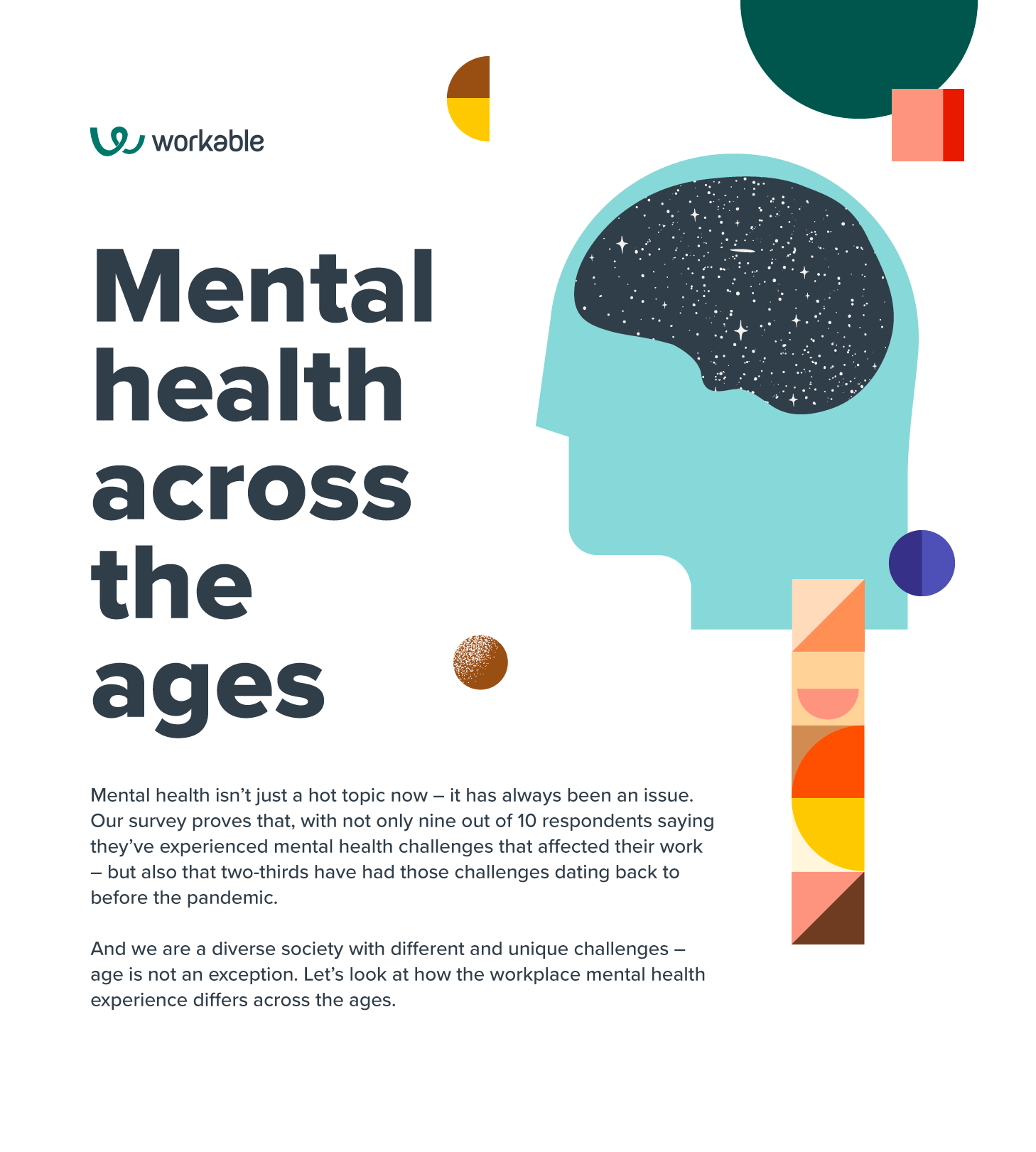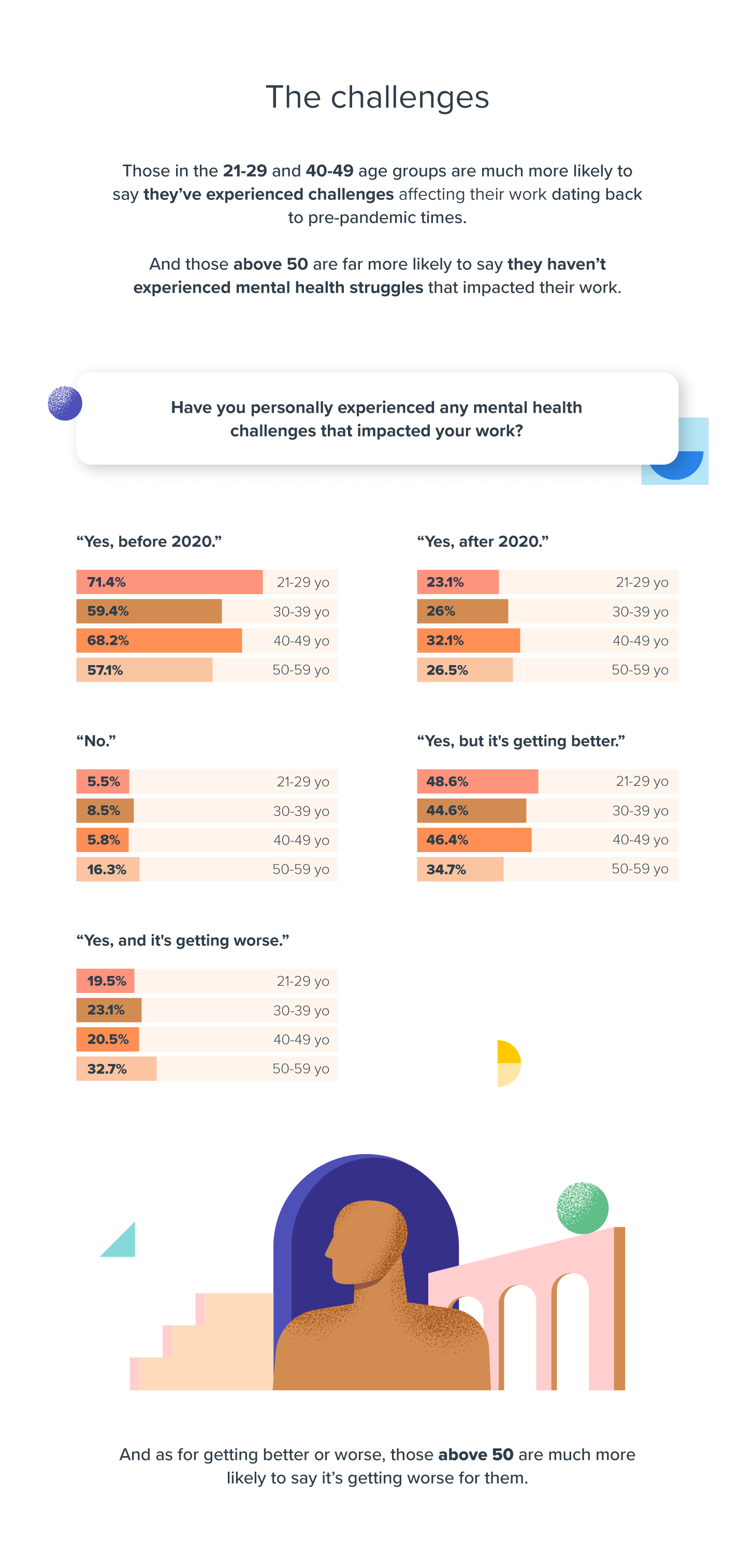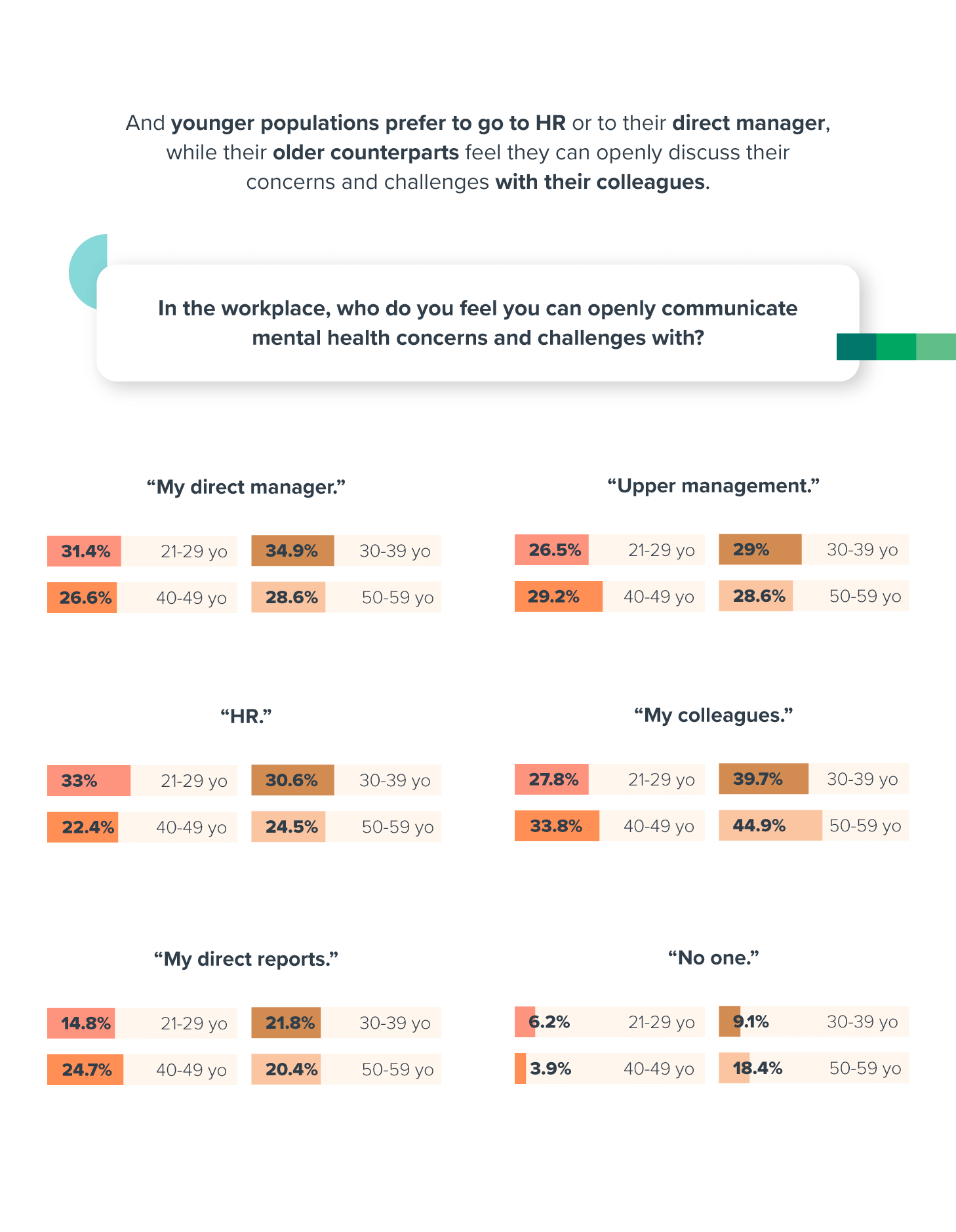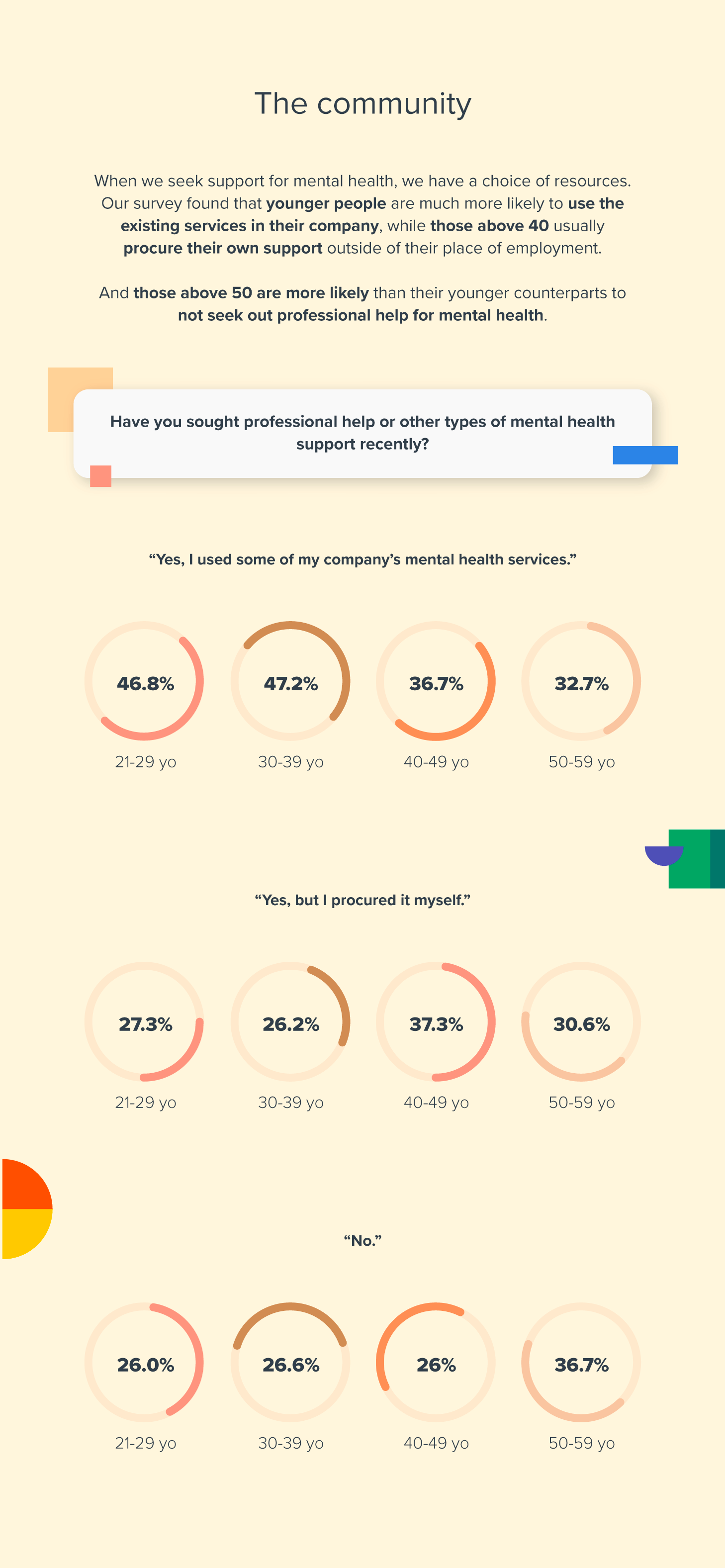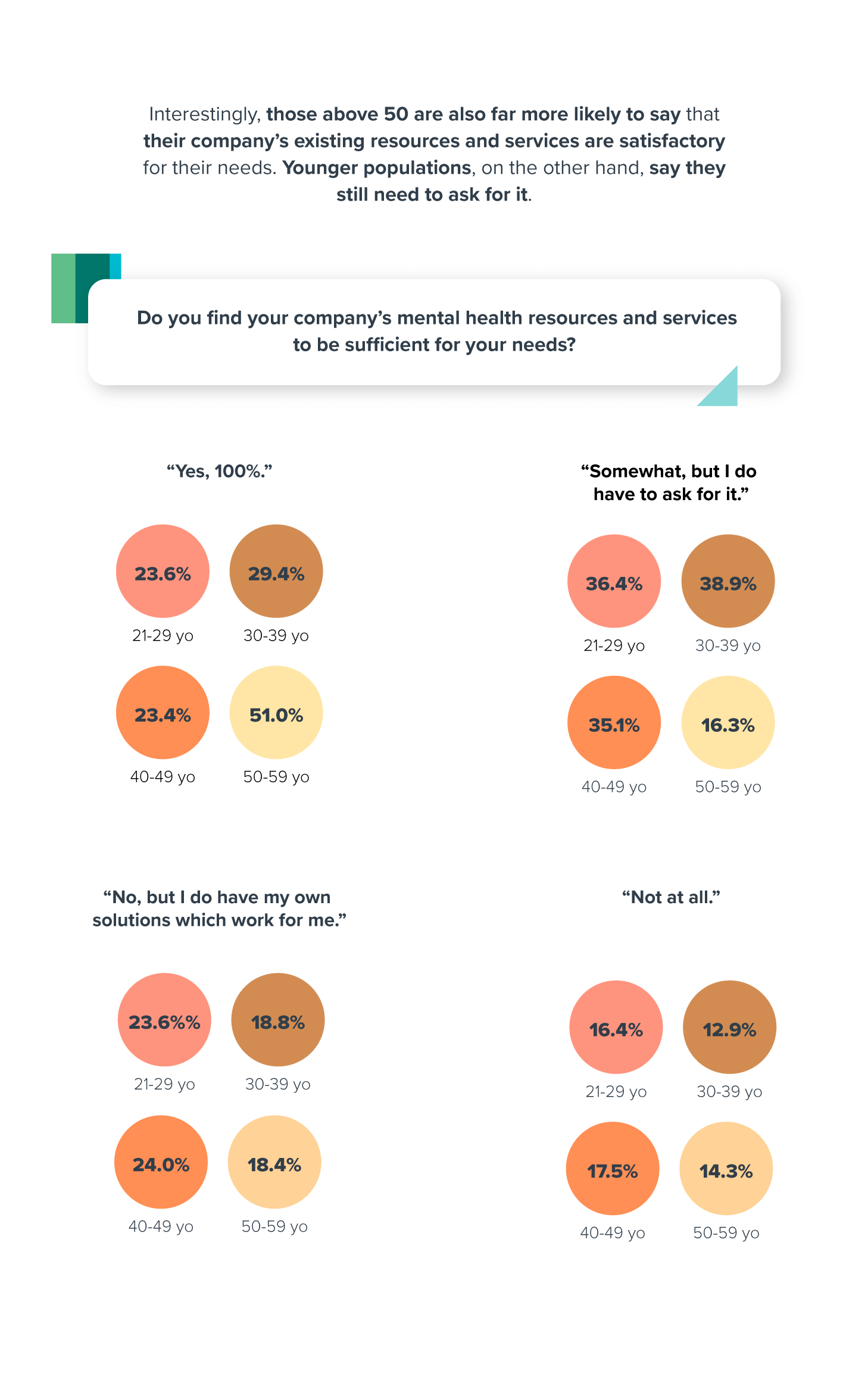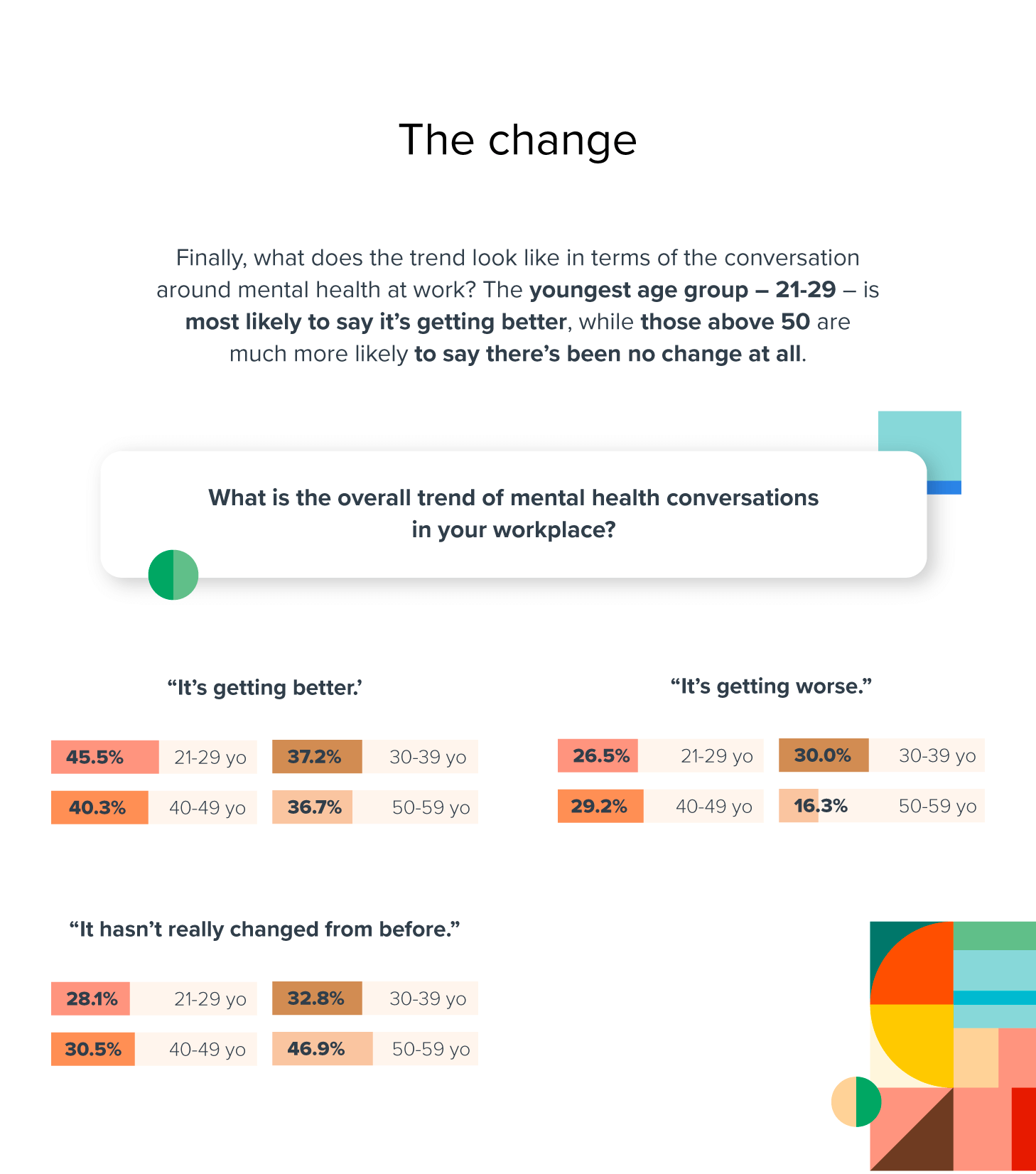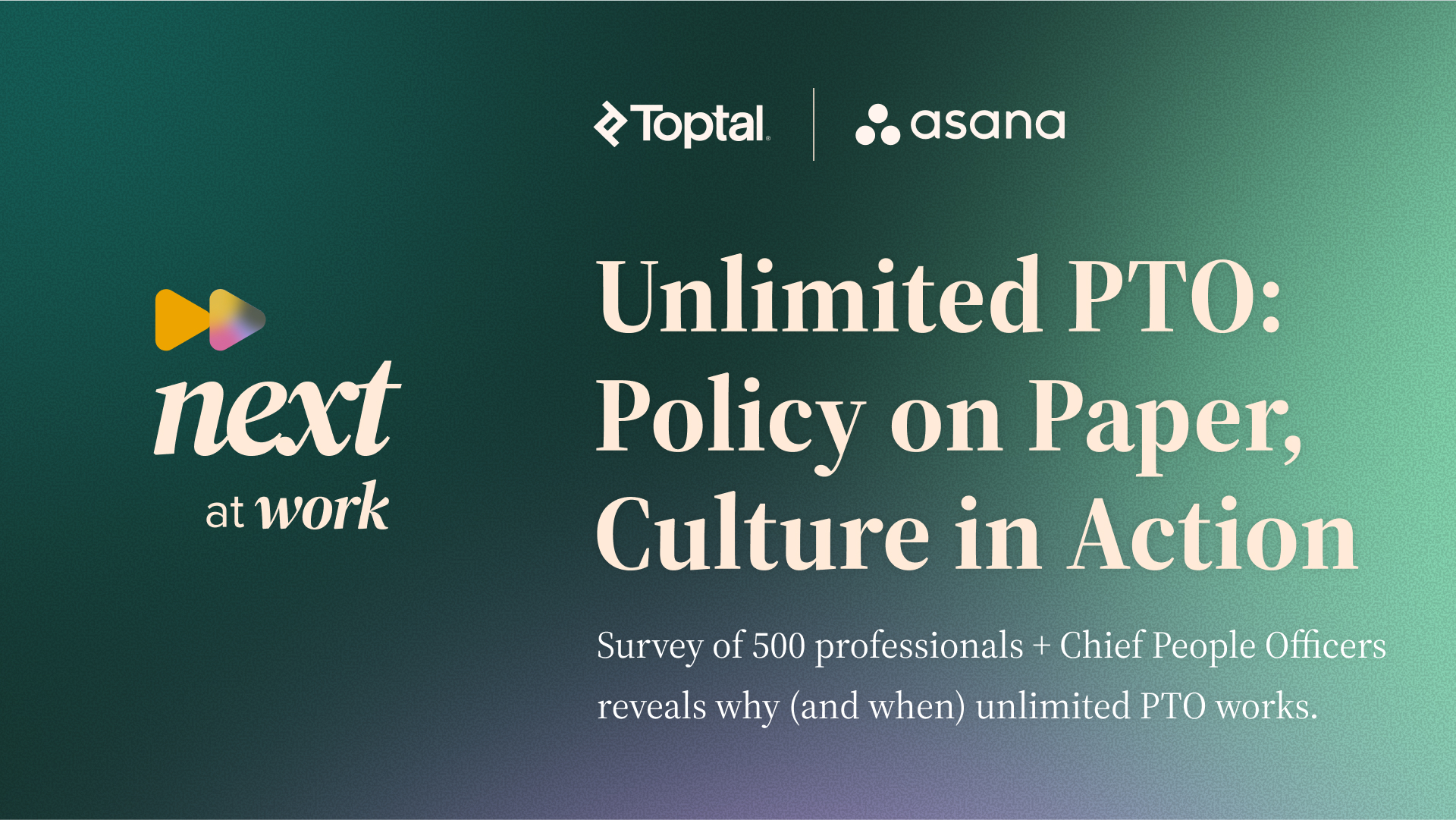INFOGRAPHIC: Mental Health across the ages
Mental health isn’t just a hot topic now – it has always been an issue. Our survey found that nine out of 10 respondents have experienced mental health challenges that affected their work – and two-thirds have had those challenges dating back to before the pandemic.
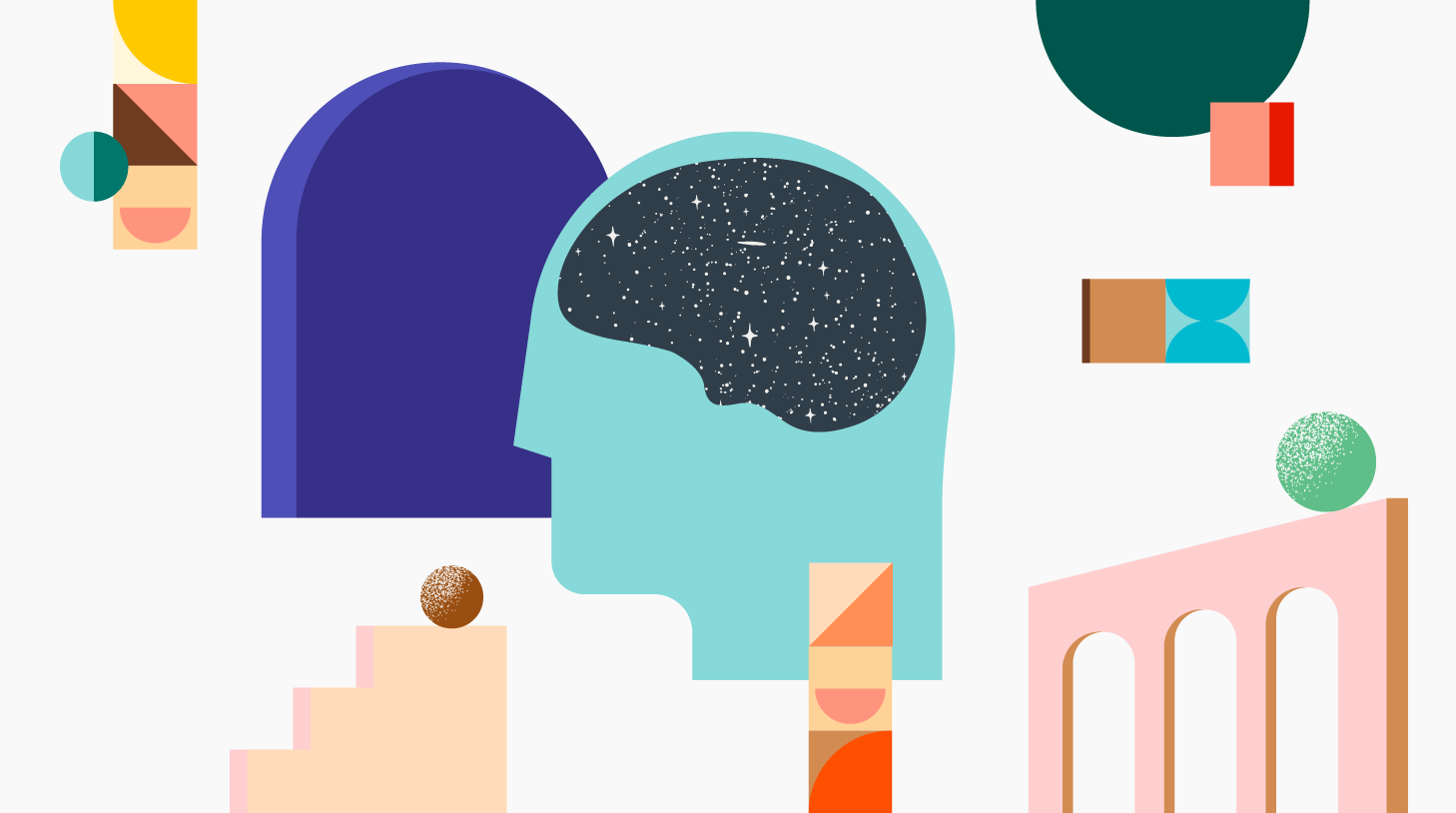
And we are a diverse society with different and unique challenges – age is not an exception. Let’s look at how the workplace mental health experience differs across the ages.
Want to see all the data in one place? Jump to the full infographic below or download it for your own files.
The challenges
Those in the 21-29 and 40-49 age groups are much more likely to say they’ve experienced challenges affecting their work dating back to pre-pandemic times.
And those above 50 are far more likely to say they haven’t experienced mental health struggles that impacted their work.
And as for getting better or worse, those above 50 are much more likely to say it’s getting worse for them.
The conversation
When it comes to talking about the topic of mental health at work, those below 50 are more likely to be not comfortable talking about it at all.
And younger populations prefer to go to HR or to their direct manager, while their older counterparts feel they can openly discuss their concerns and challenges with their colleagues.
The community
When we seek support for mental health, we have a choice of resources. Our survey found that younger people are much more likely to use the existing services in their company, while those above 40 usually procure their own support outside of their place of employment.
And those above 50 are more likely than their younger counterparts to not seek out professional help for mental health.
Interestingly, those above 50 are also far more likely to say that their company’s existing resources and services are satisfactory for their needs. Younger populations, on the other hand, say they still need to ask for it.
The change
Finally, what does the trend look like in terms of the conversation around mental health at work? The youngest age group – 21-29 – is most likely to say it’s getting better, while those above 50 are much more likely to say there’s been no change at all.
The conclusion
There’s no real verdict – this isn’t a court of law. But there are indicators here:
- Older populations are more freely able to talk about it with their colleagues but also don’t see much change from before – plus, they’re more likely to say they don’t experience mental health challenges.
- Younger populations prefer to be more discreet when communicating those challenges – but they do say their challenges are getting better.
What does all this mean for you as an employer? When building your diversity, equity and inclusion strategy, don’t focus solely on race or gender – think about age as well.
That also applies to your mental health action plan – and not just in the resources you offer your workers. It’s also the way in which you communicate, the way in you share information, the way in which you establish safe spaces, and more.
Different groups act and respond differently. We live in a richly diverse society, and our response should be richly diverse as well.

